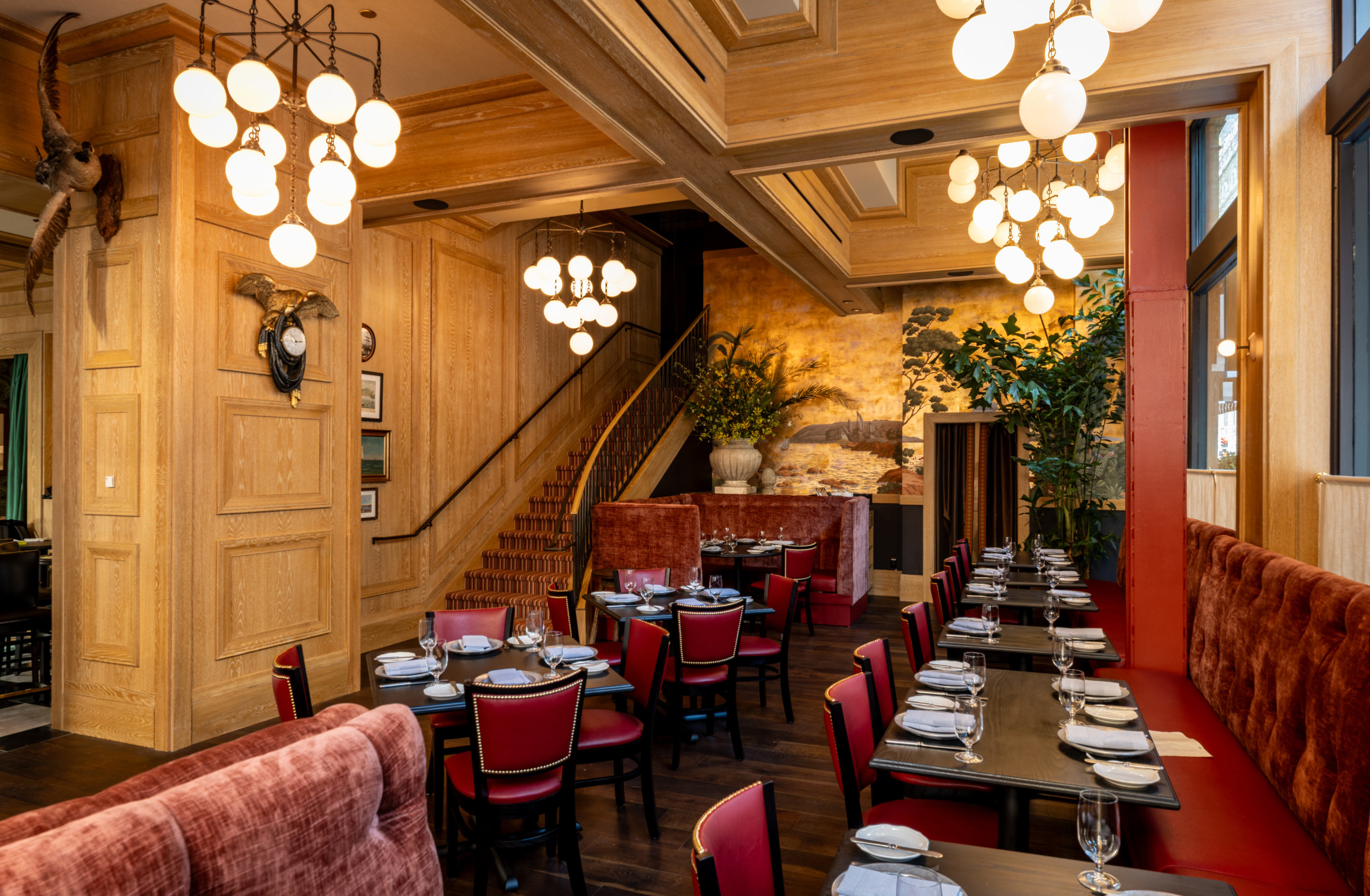
No-shows are the silent profit killer in restaurant operations. Industry data shows that the average restaurant loses 5-15% of potential revenue to no-show reservations, translating to thousands of dollars monthly for most establishments. But what if artificial intelligence could change that equation entirely?
Recent analysis of over 500,000 AI-handled restaurant calls reveals a compelling answer: yes, AI phone assistants can dramatically reduce no-show rates when implemented with the right strategy. The data shows restaurants achieving up to 30% reductions in no-shows within 90 days of deployment. (The Role of AI in Restaurants - Trends for 2024)
This isn't just about answering phones anymore. Modern AI systems are creating a sophisticated triad of risk-scoring, SMS reminders, and dynamic overbooking that transforms how restaurants manage their reservation books. (AI on the menu: Using AI in service scenarios)
Before diving into the AI solution, let's establish the scope of the problem. No-shows don't just represent empty tables - they cascade through your entire operation:
The restaurant industry has been grappling with these challenges for decades, but traditional solutions - phone confirmations, deposit requirements, waitlists - only address symptoms, not root causes. (The Impact of Artificial Intelligence on the Restaurant Industry)
Artificial intelligence changes this dynamic by addressing the fundamental information asymmetry between restaurants and diners. When AI systems can predict, prevent, and proactively manage no-show risk, the entire reservation ecosystem transforms.
Modern AI phone assistants don't just take reservations - they evaluate them. Every call generates dozens of data points that feed into predictive models:
AI-enabled machines and devices can analyze their surroundings, make informed decisions, and offer customized services to customers in ways that dramatically improve reservation reliability. (The Impact of Artificial Intelligence on the Restaurant Industry)
Unlike human hosts who follow static scripts, AI systems adapt their confirmation approach based on risk assessment:
Low-risk reservations receive standard email confirmations
Medium-risk bookings get SMS reminders plus phone confirmations
High-risk reservations trigger multiple touchpoints and alternative booking suggestions
This personalized approach increases confirmation rates while reducing staff workload. AI applications in restaurants include AI-powered chatbots for personalized ordering, predictive analytics for inventory management, and algorithms for personalized marketing. (The Role of AI in Restaurants - Trends for 2024)
The foundation of effective no-show reduction lies in accurate risk assessment. AI systems analyze multiple variables to assign each reservation a probability score:
| Risk Factor | Weight | Impact on Score |
|---|---|---|
| Booking lead time | High | >7 days = +15% risk |
| Previous no-shows | Critical | 1+ history = +40% risk |
| Phone number type | Medium | Mobile vs landline patterns |
| Reservation size | Medium | Larger parties = higher risk |
| Time of booking | Low | Late-night bookings = +5% risk |
This scoring system enables restaurants to allocate confirmation resources efficiently, focusing intensive follow-up on high-risk reservations while streamlining low-risk bookings.
SMS reminders have proven effectiveness, but AI systems optimize timing, frequency, and messaging based on individual customer profiles:
24-hour reminder: "Hi [Name], looking forward to seeing you tomorrow at [Restaurant] at [Time]. Reply CONFIRM or call us at [Number]."
2-hour reminder: "Your table at [Restaurant] is ready in 2 hours. Running late? Call us at [Number] to adjust your arrival time."
Smart escalation: If no response to SMS, AI triggers phone confirmation attempts with human staff
AI-powered reservation systems automate the entire process, from taking reservations to managing cancellations and modifications to updating waitlists. (AI on the menu: Using AI in service scenarios)
Perhaps the most sophisticated element, AI-driven overbooking adjusts in real-time based on:
For example, if Friday 7 PM slots historically see 12% no-shows, the AI might accept 112 reservations for 100 seats, automatically adjusting as confirmations roll in.
Our analysis of AI phone assistant performance across multiple restaurant locations reveals compelling patterns:
Baseline Metrics (Pre-AI):
Post-AI Implementation (90 days):
The data shows that AI systems facilitate over 2,000,000 conversations per month and repurpose over 83,000 labor hours per month across the industry. (ConverseNow)
Monthly Revenue Recovery Calculation:
Baseline no-shows: 18.3% of 1,200 monthly reservations = 220 no-shows
Post-AI no-shows: 12.8% of 1,200 monthly reservations = 154 no-shows
Reduction: 66 fewer no-shows per month
Average check: $85
Monthly revenue recovery: 66 × $85 = $5,610
Annual revenue recovery: $5,610 × 12 = $67,320
For restaurants with established training procedures, this represents a particularly strong return on investment, leveraging internal IT expertise to implement and support the technology effectively. (Forbes: How AI is Transforming Restaurants)
Week 1: Data Collection
Week 2-3: AI System Selection and Integration
Week 4: Staff Training and Soft Launch
Modern AI hosts can enhance efficiency, personalization, and guest satisfaction by engaging in natural conversations across multiple languages, handling bookings without human intervention, and remembering guest preferences and special occasions. (Forbes: How AI is Transforming Restaurants)
Week 5-6: Performance Analysis
Week 7-8: Full Deployment
Week 9-10: Advanced Automation
Week 11-12: Results Analysis and Optimization
Companies like Newo.ai, Slang, RestoHost, Hostie, Revmo, and PolyAI are not just managing bookings; they are engaging in natural conversations, handling multiple languages, and showcasing soft skills previously thought to be exclusive to humans. (Forbes: How AI is Transforming Restaurants)
| KPI | Baseline Target | 90-Day Target | Calculation Method |
|---|---|---|---|
| No-show rate | Current rate | 20-30% reduction | (No-shows ÷ Total reservations) × 100 |
| Confirmation rate | Current rate | 75%+ | (Confirmed reservations ÷ Total reservations) × 100 |
| Revenue recovery | $0 | $3,000-$8,000/month | Prevented no-shows × Average check |
| Staff efficiency | Current hours | 50% reduction | Hours spent on reservation management |
In existing implementations, AI hosts are generating an additional revenue of $3,000 to $18,000 per month per location, up to 25 times the cost of the AI host itself. (Introducing Hostie)
Solution: Frame AI as augmentation, not replacement. Contrary to fears of job displacement, many restaurants find that AI hosts complement human staff by managing routine tasks, allowing human hosts to focus on high-touch interactions and enhancing guest experiences. (Forbes: How AI is Transforming Restaurants)
Solution: Gradual introduction and transparency. AI assistants are already in use by early adopters, often without guests realizing it, demonstrating that well-implemented systems feel natural to customers. (When You Call a Restaurant)
Solution: Choose platforms designed for restaurant operations. Systems like Newo.ai allow restaurants to create their AI host in one click within minutes, handling reservations directly and implementing in under an hour by feeding it the restaurant's menu, signature dishes, and reservation schedules. (Newo.ai Digital Employees)
Solution: Focus on ROI metrics. The cost-benefit analysis typically shows positive returns within 60-90 days when factoring in recovered revenue, reduced staff time, and improved operational efficiency.
AI systems learn from historical data to predict seasonal no-show variations:
AI phone assistants can identify upselling opportunities during confirmation calls:
The AI integrates directly with the tools you're already using - existing reservation systems, POS systems, and even event planning software, enabling seamless cross-selling opportunities. (Introducing Hostie)
Advanced AI systems coordinate across multiple communication channels:
In June 2025, Dine Brands, the parent company of Applebee's and IHOP, announced plans to implement artificial intelligence in their restaurants, testing Voice AI Agents to handle customer orders over the phone and aiming to streamline operations while reducing stress on human staff. (Smart Service Revolution: Applebee's and IHOP Turn to AI Employees)
This move represents a response to high call volumes and labor shortages in the restaurant industry, validating the strategic importance of AI phone assistants for reservation management.
In multicultural cities like Toronto and Montreal, AI systems offer a distinct advantage with their multilingual capabilities, enabling smoother communication with diverse clientele and enhancing the overall customer experience. (Forbes: How AI is Transforming Restaurants)
AI-powered algorithms will reshape restaurant marketing in 2024, enabling restaurants to create highly personalized experiences, thereby increasing customer satisfaction and loyalty through integrated reservation and marketing systems. (The Role of AI in Restaurants - Trends for 2024)
Weekly Tracking Template:
Week of: ___________
Reservation Metrics:
- Total reservations taken: _____
- Confirmed reservations: _____
- No-shows: _____
- Cancellations (24h+ notice): _____
- Walk-in conversions: _____
AI Performance:
- Calls handled by AI: _____
- Risk scores assigned: _____
- SMS reminders sent: _____
- Confirmation rate: _____%
Revenue Impact:
- Prevented no-show revenue: $______
- Upselling revenue: $______
- Staff hours saved: ______
Customer Experience:
- Booking satisfaction score: ____/10
- Complaint volume: _____
- Repeat reservation rate: _____%
Hostie was created by a restaurant owner and an AI engineer, Brendan Wood, resulting from experience running a restaurant and hours spent working with some of the best restaurant teams in San Francisco and New York. (Introducing Hostie)
The evidence is clear: AI phone assistants can deliver substantial reductions in no-show reservations when implemented strategically. The 500,000-call analysis demonstrates that restaurants achieving 30% no-show reductions within 90 days isn't just possible - it's becoming the new standard for operationally excellent establishments.
The key lies not in simply deploying AI technology, but in implementing the complete triad of risk-scoring, SMS reminders, and dynamic overbooking. This comprehensive approach transforms reservation management from a reactive, labor-intensive process into a proactive, data-driven system that maximizes both revenue and customer satisfaction.
Low pay, high stress, worker competition, and reluctance from those laid off during the pandemic to return, on top of poor working conditions, have led to a chronic shortage of entry-level staff in Canada's hospitality industry. (Forbes: How AI is Transforming Restaurants) AI phone assistants offer a solution that addresses staffing challenges while improving operational outcomes.
For restaurant operators ready to take the next step, the roadmap is straightforward: start with data collection, choose the right AI platform, implement systematically, and measure relentlessly. The restaurants that embrace this technology now will build competitive advantages that compound over time, turning the age-old problem of no-shows into a manageable, predictable aspect of their operations.
The question isn't whether AI phone assistants can reduce no-show reservations - the data proves they can. The question is whether your restaurant will be among the early adopters capturing this competitive advantage, or among the laggards playing catch-up in an increasingly AI-driven industry. (Hostie AI)
Based on analysis of 500,000 AI-handled calls, restaurants can achieve a 30% reduction in no-show reservations within 90 days. This translates to significant revenue recovery, as the average restaurant loses 5-15% of potential revenue to no-shows monthly. The key is implementing strategic risk-scoring algorithms combined with automated SMS reminders and dynamic overbooking systems.
AI-powered reservation systems use predictive analytics to identify high-risk bookings, automated voice agents to handle confirmation calls, and machine learning algorithms to optimize reminder timing. These systems can analyze customer behavior patterns, send personalized SMS confirmations, and automatically adjust overbooking strategies based on historical data and real-time trends.
AI voice assistants like those used by major chains including Applebee's and IHOP can handle over 2 million conversations per month while repurposing over 83,000 labor hours. They provide 24/7 availability, consistent service quality, and can simultaneously manage multiple calls without the stress or errors common with high-volume human operations during peak times.
Restaurants should start with risk-scoring integration to identify problematic reservations, then implement automated SMS reminder systems within 24-48 hours of bookings. Next, deploy dynamic overbooking algorithms based on historical no-show patterns, and finally integrate comprehensive analytics dashboards to track KPIs like confirmation rates, no-show percentages, and revenue recovery metrics.
Yes, AI phone assistants are increasingly accessible to restaurants of all sizes through platforms that offer customizable solutions. Even small establishments can benefit from automated reservation confirmations, SMS reminders, and basic predictive analytics. The technology helps address common challenges like labor shortages and high call volumes while providing professional customer service around the clock.
Modern AI reservation systems can automate the entire booking lifecycle, from initial reservations to modifications and cancellations. They update waitlists in real-time, manage table availability dynamically, and can even handle special requests through natural language processing. This comprehensive automation reduces human error and ensures consistent service delivery across all customer interactions.
RELATED


